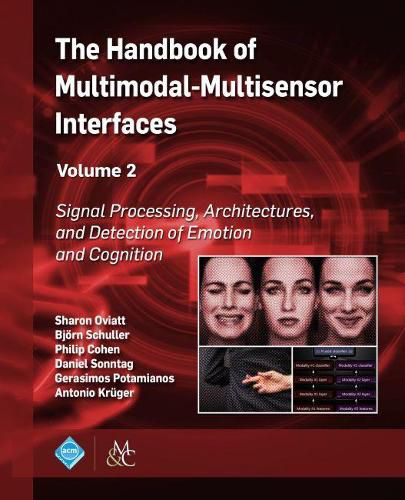Readings Newsletter
Become a Readings Member to make your shopping experience even easier.
Sign in or sign up for free!
You’re not far away from qualifying for FREE standard shipping within Australia
You’ve qualified for FREE standard shipping within Australia
The cart is loading…






This title is printed to order. This book may have been self-published. If so, we cannot guarantee the quality of the content. In the main most books will have gone through the editing process however some may not. We therefore suggest that you be aware of this before ordering this book. If in doubt check either the author or publisher’s details as we are unable to accept any returns unless they are faulty. Please contact us if you have any questions.
The Handbook of Multimodal-Multisensor Interfaces provides the first authoritative resource on what has become the dominant paradigm for new computer interfaces: user input involving new media (speech, multi-touch, hand and body gestures, facial expressions, writing) embedded in multimodal-multisensor interfaces that often include biosignals. This edited collection is written by international experts and pioneers in the field. It provides a textbook, reference, and technology roadmap for professionals working in this and related areas. This second volume of the handbook begins with multimodal signal processing, architectures, and machine learning. It includes recent deep learning approaches for processing multisensorial and multimodal user data and interaction, as well as context-sensitivity. A further highlight is processing of information about users’ states and traits, an exciting emerging capability in next-generation user interfaces. These chapters discuss real-time multimodal analysis of emotion and social signals from various modalities, and perception of affective expression by users. Further chapters discuss multimodal processing of cognitive state using behavioral and physiological signals to detect cognitive load, domain expertise, deception, and depression. This collection of chapters provides walk-through examples of system design and processing, information on tools and practical resources for developing and evaluating new systems, and terminology and tutorial support for mastering this rapidly expanding field. In the final section of this volume, experts exchange views on the timely and controversial challenge topic of multimodal deep learning. The discussion focuses on how multimodal-multisensor interfaces are most likely to advance human performance during the next decade.
$9.00 standard shipping within Australia
FREE standard shipping within Australia for orders over $100.00
Express & International shipping calculated at checkout
This title is printed to order. This book may have been self-published. If so, we cannot guarantee the quality of the content. In the main most books will have gone through the editing process however some may not. We therefore suggest that you be aware of this before ordering this book. If in doubt check either the author or publisher’s details as we are unable to accept any returns unless they are faulty. Please contact us if you have any questions.
The Handbook of Multimodal-Multisensor Interfaces provides the first authoritative resource on what has become the dominant paradigm for new computer interfaces: user input involving new media (speech, multi-touch, hand and body gestures, facial expressions, writing) embedded in multimodal-multisensor interfaces that often include biosignals. This edited collection is written by international experts and pioneers in the field. It provides a textbook, reference, and technology roadmap for professionals working in this and related areas. This second volume of the handbook begins with multimodal signal processing, architectures, and machine learning. It includes recent deep learning approaches for processing multisensorial and multimodal user data and interaction, as well as context-sensitivity. A further highlight is processing of information about users’ states and traits, an exciting emerging capability in next-generation user interfaces. These chapters discuss real-time multimodal analysis of emotion and social signals from various modalities, and perception of affective expression by users. Further chapters discuss multimodal processing of cognitive state using behavioral and physiological signals to detect cognitive load, domain expertise, deception, and depression. This collection of chapters provides walk-through examples of system design and processing, information on tools and practical resources for developing and evaluating new systems, and terminology and tutorial support for mastering this rapidly expanding field. In the final section of this volume, experts exchange views on the timely and controversial challenge topic of multimodal deep learning. The discussion focuses on how multimodal-multisensor interfaces are most likely to advance human performance during the next decade.